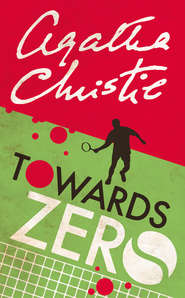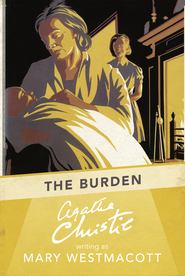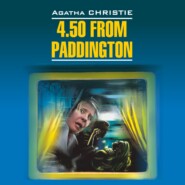По всем вопросам обращайтесь на: info@litportal.ru
(©) 2003-2025.
✖
Agatha Christie’s Complete Secret Notebooks
Настройки чтения
Размер шрифта
Высота строк
Поля
Or man rushes in to ask for aid – after stewardess has come she finds he is stabbed in the shoulder – Doctor enters ‘Allow me’ – She is suspicious of him – he smiles – in the end man is taken into doctor’s cabin and Ship’s doctor attends him
The reference to Lord Northcliffe, the famous newspaperman, suggests that Christie intended to base Lord Nasby, whom Anne visits in Chapter 5 to ask for a job, on him. And both the alternative scenarios involving the changing of cabins and the stabbed man featured in the novel.
The Secret of Chimneys (#ulink_351734af-d6a3-5f29-bf26-8a33ef806d73)
12 June 1925
A shooting party weekend at the country house Chimneys conceals the presence of international diplomats negotiating lucrative oil concessions with the kingdom of Herzoslovakia. When a dead body is found, Superintendent Battle’s subsequent investigation uncovers international jewel thieves, impersonation and kidnapping as well as murder.
‘These were easy to write, not requiring too much plotting or planning.’ An Autobiography makes only this fleeting reference to The Secret of Chimneys, first published in the summer of 1925 as the last of the six books she had contracted to produce for John Lane. In this ‘easy to write’ category she also included The Seven Dials Mystery, published four years later, which also features many of the same characters.
The Secret of Chimneys is not a formal detective story but a light-hearted thriller, a form to which she returned intermittently over the next quarter century. The Secret of Chimneys has all the ingredients, in generous profusion, of a good thriller of the period: missing jewels, a mysterious manuscript, compromising letters, oil concessions, a foreign throne, villains, heroes, and mysterious and beautiful women. It has distinct echoes of The Prisoner of Zenda, Anthony Hope’s immortal swashbuckling novel that Tuppence recalls with affection in Chapter 2 of Postern of Fate: ‘one’s first introduction, really, to the romantic novel. The romance of Prince Flavia. The King of Ruritania, Rudolph Rassendyll …’ Christie organised these classic elements into a labyrinthine plot including a whodunit element.
The story begins in Africa, a country Christie had recently visited on her world tour in the company of her husband Archie. The protagonist, the somewhat mysterious Anthony Cade, undertakes to deliver a package to an address in London. This seemingly straightforward mission proves difficult and dangerous and before he can complete it he meets the beautiful Virginia Revel, who also has a commission for him: to dispose of the inconveniently dead body of her blackmailer. This achieved, they meet again at Chimneys, the country estate of Lord Caterham and his daughter Lady Eileen ‘Bundle’ Brent. From this point on, we are in more ‘normal’ Christie territory, the country house with a group of temporarily isolated characters, one of them of them a murderer.
But a major suspension of disbelief is called for when we are asked to believe that a young woman will pay a blackmailer £40 (roughly £1,500 today) for an indiscretion that she did not commit, just for the experience of being blackmailed (Chapter 6), and that two chapters later, when said blackmailer is found inconveniently, and unconvincingly, dead in her sitting room, she asks the first person who turns up on her doorstep (literally) to dispose of the body, while she blithely goes away for the weekend. By its nature this type of thriller is light-hearted, but The Secret of Chimneys demands much indulgence on the part of the reader.
The hand of Christie the detective novelist is evident in elements of the narration. Throughout the book the reliability of Anthony Cade is constantly in doubt and as early as Chapter 1 he jokes with his tourist group (and, by extension, the reader) about his real name. This is taken as part of his general banter but, as events unfold, he is revealed to be speaking nothing less than the truth. For the rest of the book Christie makes vague statements about Cade and when we are given his thoughts they are, in retrospect, ambiguous.
Anthony looked up sharply.
‘Herzoslovakia?’ he said with a curious ring in his voice. [Chapter 1]
‘… was it likely that any of them would recognise him now if they were to meet him face to face?’ [Chapter 5]
‘No connexion with Prince Michael’s death, is there?’
His hand was quite steady. So were his eyes. [Chapter 18]
‘The part of Prince Nicholas of Herzoslovakia.’
The matchbox fell from Anthony’s hand, but his amazement was fully equalled by that of Battle. [Chapter 19]
‘I’m really a king in disguise, you know’ [Chapter 23]
And how many readers will wonder about the curious scene at the end of Chapter 16 when Anchoukoff, the manservant, tells him he ‘will serve him to the death’ and Anthony ponders on ‘the instincts these fellows have’? Anthony’s motives remain unclear until the final chapter, and the reader, despite these hints, is unlikely to divine his true identity and purpose.
There are references, unconscious or otherwise, to other Christie titles. The rueful comments in Chapter 5 when Anthony remarks, ‘I know all about publishers – they sit on manuscripts and hatch ’em like eggs. It will be at least a year before the thing is published,’ echo Christie’s own experiences with John Lane. The ploy of leaving a dead body in a railway left-luggage office, adopted by Cade in Chapter 9, was used in the 1923 Poirot short story ‘The Adventure of the Clapham Cook’. Lord Caterham’s description of the finding of the body in Chapter 10 distinctly foreshadows a similar scene almost twenty years later in The Body in the Library when Colonel Bantry shares this unwelcome experience. And Virginia Revel’s throwaway comments about governesses and companions in Chapter 22 – ‘It’s awful but I never really look at them properly. Do you?’ – would become the basis of more than one Christie plot, among them Death in the Clouds, After the Funeral and Appointment with Death. The same chapter is called ‘The Red Signal’, also the title of a short story from The Hound of Death, both sharing a common theme.
There are a dozen pages of notes in Notebook 65 for the novel, consisting mainly of a list of chapters and their possible content with no surprises or plot variations. But the other incarnation of The Secret of Chimneys makes for more interesting reading. For many years this title was one of the few Christies not adapted for stage, screen or radio. Or so it was thought, until it emerged that the novel was, very early in her career, one of Christie’s first forays into stage adaptation. The history of the play is, appropriately, mysterious. It was scheduled to appear at the Embassy Theatre in London in December 1931 but was replaced at the last moment by a play called Mary Broome, a twenty-year-old comedy by one Allan Monkhouse.
And that was the last that was heard of Chimneys for over 70 years, until a copy of the manuscript appeared, equally mysteriously, on the desk of the Artistic Director of the Vertigo Theatre in Calgary, Canada. So, almost three-quarters of a century after its projected debut, the premiere of Chimneys took place on 11 October 2003. And in June 2006, UK audiences had the opportunity to see this ‘lost’ Agatha Christie play, when it was presented at the Pitlochry Theatre Festival.
It is not known when exactly or, indeed, why Christie decided to adapt this novel for the stage, but it was probably done during late 1927/early 1928; a surviving typescript is dated July 1928. This would tally with the notes for the play, which are in the Notebook that has very brief, cryptic notes for some of the stories in The Thirteen Problems, the first of which appeared in December 1927. The Secret of Chimneys does not lend itself easily, or, it must be said, convincingly, to adaptation. If Christie decided in the late 1920s to dramatise one of her titles, one possible reason for choosing The Secret of Chimneys may have been her reluctance to put Poirot on the stage. She dropped him from four adaptations in later years: Murder on the Nile, Appointment with Death, The Hollow and Go Back for Murder (Five Little Pigs). The only play thus far to feature him was the original script, Black Coffee, staged the year before the proposed presentation of Chimneys. Yet, if she had wanted to adapt an earlier title, surely The Mysterious Affair at Styles or even The Murder on the Links would have been easier, set as they are largely in a single location and therefore requiring only one stage setting?
Perhaps with this in mind, the adaptation of The Secret of Chimneys is set entirely in Chimneys. This necessitated dropping large swathes of the novel (including the early scenes in Africa and the disposal, by Anthony, of Virginia’s blackmailer) or redrafting these scenes for delivery as speeches by various characters, which tends to make for a verbose and static Act I. The remaining Acts are livelier with, eventually, revelations of multiple impersonations, as well as a ‘new’ murderer.
The solution in the stage version is the earliest example of Christie altering her own earlier explanation. She was to do this throughout her career, giving extra twists to dramatisations of And Then There Were None, Appointment with Death and Witness for the Prosecution. In Chimneys she makes even more drastic alterations to the original solution; the character unmasked as the villain at the end of the novel does not even appear in the stage adaptation. There are also sly references, to be picked up by alert Christie aficionados, to ‘retiring and growing vegetable marrows’ – a further indication of this being a post-Murder of Roger Ackroyd adaptation – and to the local town of Market Basing, a recurrent Christie location.
Some correspondence between Christie and Edmund Cork, her agent, in the summer of 1951 would seem to indicate that there were hopes of a revival, or to be strictly accurate, a first appearance of the play; but further developments in connection with a staging of the play, if any, remain unknown and it is clear that until Calgary in 2003 the script remained an ‘unknown’ Christie. The remote possibility that the script preceded the novel, which might have explained the unlikely choice for adaptation, is refuted by the reference in the opening pages of notes by the use of the phrase ‘Incidents likely to retain’.
There are amendments to the original novel as the entire play is set in Chimneys, where a weekend house party, arranged in order to conceal an important international meeting, is about to begin, and by the opening of Act I, Scene ii the murder has been committed. In a major change from the novel, Anthony Cade and Virginia Revel – in a scence foreshadowing similar in Spider’s Web and The Unexpected Guest – are the ones to find the body, although they say nothing and allow the discovery to be made the following morning. In effect, Act II opens at Chapter 10 of the book and from there on both follow much the same plan.
The Cast of Characters and Scenes of the Play from a 1928 script of Chimneys.
A major divergence is the omission of the scenes involving the discovery and disposal, by Cade, of the blackmailer’s body. In fact, the entire blackmail scenario is substantially different. But whether written or staged, it is an unconvincing red herring and it could have been omitted entirely from the script without any loss. Other changes incorporated into the stage version include the fact that Virginia has no previous connection with Herzoslovakia, an aspect of the book that signally fails to convince. The secret passage from Chimneys to Wyvern Abbey is not mentioned, the character Hiram Fish is dropped and the hiding place of the jewels is different from, and not as well clued as, that in the novel.
The notes for Chimneys are all contained in Notebook 67. It is a tiny, pocket-diary sized notebook and the handwriting is correspondingly small and frequently illegible. In addition to the very rough notes for some of The Thirteen Problems the Notebook contains sketches of some Mr Quin short stories, including notes for a dramatisation of the Quin story ‘The Dead Harlequin’. Overall, the notes for Chimneys do not differ greatly from the final version of the play, but substantial changes have been made from the original novel.
The first page reads:
People
Lord Caterham
Bundle
Lomax
Bill
Virginia
Tredwell
Antony
Prince Michael
Now what happens?
Incidents likely to retain – V[irginia] blackmailed
Idea of play
Crown jewels of Herzoslovakia stolen from assassinated King and Queen during house party at Chimneys – hidden there.
And twenty-five pages later an amended cast of characters:
Lord C
George
Bill
Tredwell
Battle

















